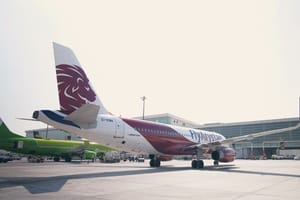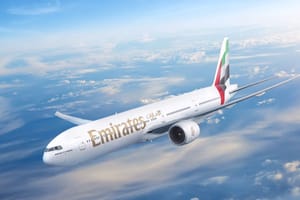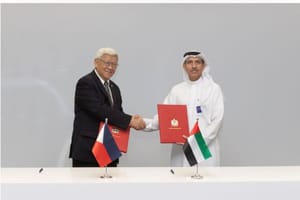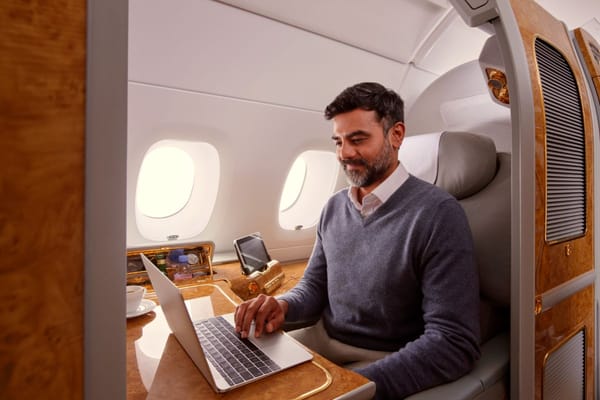In a significant move to bolster Dubai’s position as a global aviation hub, Sheikh Mohammed bin Rashid Al Maktoum, Vice President and Prime Minister of the UAE and Ruler of Dubai has approved a $34.85 billion (Dhs128bn) expansion plan for a new passenger terminal at Dubai World Central (DWC), also known as Al Maktoum International Airport. This initiative aims to alleviate the growing pressure on Dubai International (DXB), which is set to handle 90 million passengers this year.
With plans to become the world's largest passenger handler within the next decade, Al Maktoum International Airport is projected to accommodate up to 260 million passengers annually and handle 12 million tonnes of cargo. Covering 70 square kilometers (27 square miles), the expanded DWC will feature 400 terminal gates and five runways and will house Emirates, flydubai, and other airline partners, positioning Dubai as a vital global aviation gateway.
Insights from Paul Griffiths, CEO of Dubai Airports
Revolutionizing the Aviation Sector
The expansion of Al Maktoum International Airport marks a transformative step for the Middle East's aviation sector, offering a substantial impact on the global industry. Griffiths highlights that with upgraded infrastructure and increased capacity, DWC is set to meet the future demands of aviation in terms of scale, scope, and evolution.
"We are confident that air travel through Dubai will continue to thrive,"
he states, emphasizing the airport's role in enhancing connectivity, trade, tourism, and economic growth both regionally and globally.
Preparing for Construction
Griffiths outlines the monumental scale and complexity of the DWC expansion project.
"With DWC slated to be five times larger than DXB, its cutting-edge technology will redefine the airport experience,"
he notes. Initially designed to handle 150 million passengers annually, the airport's capacity will eventually expand to 260 million per year. Realizing this vision requires flexibility, creativity, and close collaboration with stakeholders, including airlines, commercial partners, government agencies, and control authorities.
Incorporating Sustainability and Technology
As the aviation sector rapidly evolves, sustainability and technology are at the forefront of the new hub's vision.
"We aim to pioneer a departure from legacy processes, setting a new standard for the industry,"
says Griffiths.
Embracing innovations like artificial intelligence and new aircraft technology, DWC’s operating model will transform the guest experience. Significant investments in automation will elevate customer service standards and overall efficiency. Sustainable practices, such as solar power, waste treatment, and biofuels, will be integrated into the terminal design, aligning with the airport's commitment to environmental responsibility.
Enhancing Customer Experience
The design philosophy for DWC focuses on creating smooth transitions from ground to air, ensuring a state-of-the-art facility that meets and exceeds evolving travel needs. Collaboration with airlines, partners, and stakeholders will refine this philosophy, ensuring the airport delivers a quick, convenient, and high-quality experience. Seamless integration of transportation modes will be prioritized to facilitate efficient transitions for all guests.
Future Prospects for DXB
While DWC is set to become the world's largest travel hub, DXB will continue to play a crucial role in international aviation. Griffiths emphasizes the importance of refreshing DXB to maintain its position as a global leader in guest experience and operational excellence. Plans include several projects to optimize processes and expand DXB’s capacity from over 90 million to about 120 million passengers annually through technological advancements, despite space constraints.
Passenger Forecast for 2024
Reflecting on the exceptional performance of DXB in 2023, which saw a 31.7% increase in passenger traffic to 86.9 million, Griffiths projects that 2024 will surpass previous records, expecting traffic to reach 90 million.
Economic Impact of the New Travel Hub
The new travel hub at Al Maktoum International Airport is poised to play a significant role in the UAE’s economic diversification strategy. Griffiths highlights that DWC will attract more visitors, businesses, and investments, driving job creation, innovation, and prosperity. This aligns with the UAE and Dubai’s vision for a sustainable and diversified economy.
By spearheading these ambitious plans, Dubai Airports is set to transform the aviation landscape, reinforcing Dubai’s status as a leading global city for business and leisure.
News Source: Gulf Business









